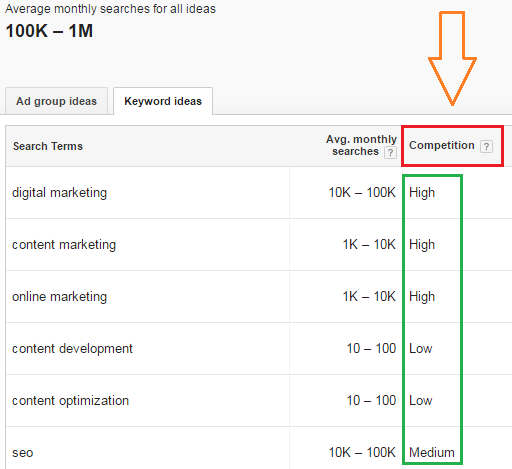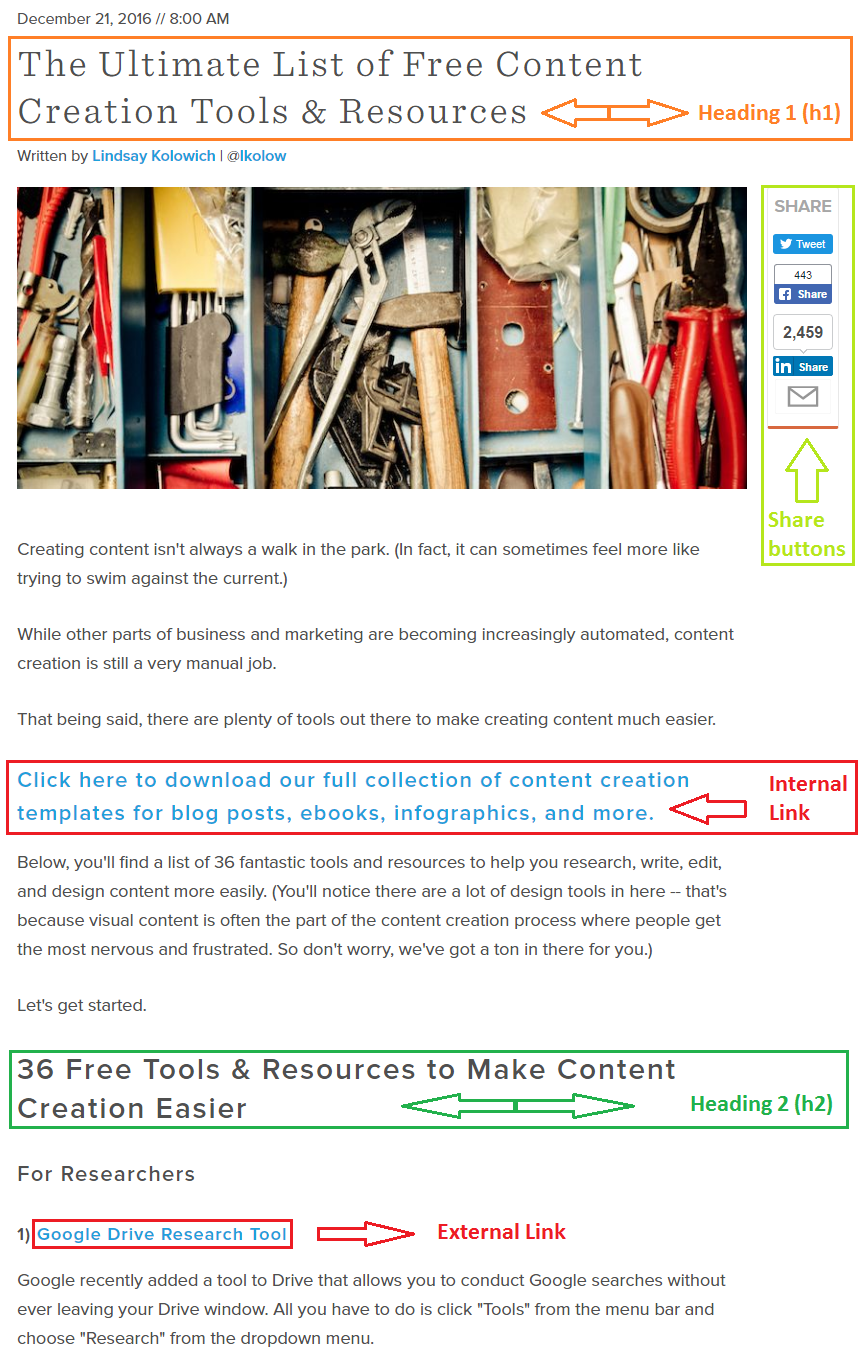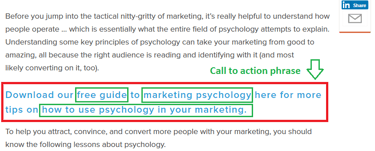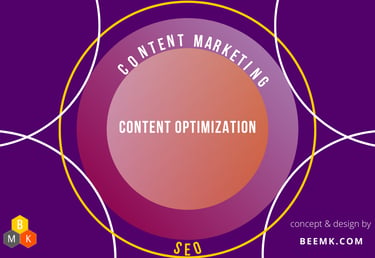Content Optimization Techniques to Build Top Ranking Pages
CONTENT OPTIMIZATIONCONTENT MARKETING
Content optimization techniques are an integral part of any content marketing strategy helping businesses build top-ranking pages, continuously draw in new visitors, satisfy users' intent, generate leads/sales, and much more...
Let’s travel together into this topic to discover content optimization techniques and propel your pages to the top of search engine rankings.
Here’s the Why and How to optimize your article/page for top ranking:
As part of SEO practice, your content marketing strategy and content optimization techniques work together to appropriately tackle your users' needs and wants and search engine ranking challenges. You need knowledge of these topics to make your website's content visible in the search engine results pages (SERPs), and thus to the right audience.
This much-needed activity called content optimization is absolutely vital for the success of your content marketing strategy. The why is that it plays a crucial role throughout the entire digital marketing funnel starting with the brand awareness stage (implies attracting and retaining your target audience) and never ends as long as there is quality content that's posted on your site, social media, or other channels.


Focus on 2-3 keywords on a page or in an article and provide interesting information in such a way that your audience becomes satisfied with the answers to their questions. Try not to exaggerate by using too many keywords (over-optimization) and don’t include additional text that doesn’t match your topic. Each main topic needs subtopics that will be discussed on its own individual pages.
Analyze, discover and anticipate what query terms people search on Google can generate the traffic you desire. Check how popular (avg. monthly searches) your keywords are and how difficult it is to rank for a certain term - look at the competition to see how fierce or moderate it is. In this way, you can decide if it’s worth investing time and money in your keywords or keep exploring until you find what’s best for your business.


In the example above, competition is high for ‘digital marketing', ‘content marketing‘, ‘online marketing‘ keywords. It’ll be difficult to achieve good rankings for those keywords.
But keywords with low competition like ’content development‘ and ‘content optimization’ represent awesome choices to include in your keyword strategy.
2. Title tag & meta description for clear page communication
Title tag and meta description still remain of great importance in terms of on-page SEO. They let users and search engines know what your pages are all about. As long as you write them concisely, without keyword stuffing and respect characters and pixels rules, search engines could provide a good rank when a search is made.
However, to become easy for search engines to understand your pages, keywords need to be found in the title tag and meta description. Title tag and meta description of your page appear in SERP and they let users know what to expect from your site before clicking on the page’s title.
In case there isn’t any title tag or meta description inside the HTML code of your page, Google is likely to generate new snippets or truncate them if they don’t respect the SEO guidelines.


As we can see in the example above, you need a title tag and meta description once you’re done with writing your post/page.
It is recommended not to use this content optimization technique when in the process of writing an article or building a page. After finishing it, you’ll definitely write a suitable title and description both for users and search engines.
3. Copy that invites your users to discover your product
For a nice view of your article, choose a font size and style that are user-friendly and match the design of your website.
Also, structure your content by using descriptive headings (H1, H2, H3) to let your reader know what your page’s sections are about. Each heading has a different size and they need to look attractive and keep readers engaged. Bold will introduce your paragraphs and highlight the main ideas.
To grab the attention of your users, in the paragraphs, highlight keywords and anchor text in bold/italic/underline or use strong color. But don’t overuse them because it isn’t SEO-friendly design and your website’s exit rate will increase.
Your text has to be easily readable on any device.
‘The Ultimate List of Free Content Creation Tools & Resources‘ article found on blog.hubspot.com is a good example when optimizing content.
Check it below to better understand how to apply content optimization methods:


4. Include internal links to make connections between your posts and pages
When writing an article, you need to be trustworthy and include additional information through internal or external links (hyperlinks). They help you link the selected keywords to any other page from inside or outside your site.
You have to use short-tail or long-tail keywords in the hypertext or anchor text to define the information you intend to link to (see the content marketing analysis above).
5. Research websites to link to proper external links
Research websites from your niche to find interesting resources and add external links to your pages. They are helpful to add additional information to your copy and make it more complete.
For a quick and in-depth online research check the article Advanced Search Strings for SEO off-page to know the formulas that can help you discover the websites that cover subjects similar to yours.
When you decide to send a link to an external webpage, make sure there’s a connection between the information that’s on your page and the one that’s on the webpage you’re linking to. Better said, the article you want to link to needs to target similar keywords and offer content that reflects your link’s anchor text.
6. Call to action phrases to convert users into leads and clients
Call-to-action (CTA) phrases are always a good option to capture people’s attention and make them click on a specific link and undertake a specific action (download a guide, register for an event, buy a product).
Make your call-to-action phrases visible and highlight them through font style or color. Play with the font size, be creative but keep it simple.
From the example below, you’ll understand how to integrate a call to action phrase within an article. Also, why it needs to be different from the rest of the paragraphs.


7. Set up pretty permalinks - page slug - and make sure they are easy to remember
A permalink comes in addition to your website address and together forms the name of your page. When you finish writing your article, check to see if your page’s URL is well-built.
It’s still an important SEO factor that can help your site get a high ranking in the search engines. More than that, a friendly URL structure needs to have between 3-4 (key)words with hyphens between them.
Before publishing the article, make sure your webpage’s URL is ready and conveys the essence of the page.
If you want to change the name of the URL use a 301 redirect. Otherwise, a 404 page that will tell your users that your content was not found will load.
8. Optimize images – Alt Text or Alt Attribute to make them accessible for people with vision impairments
As soon as the article is ready, choose a high-quality and inspiring image that reflects your page/post message. After you upload the picture, complete the Alt Text box with an accurate description. Don’t forget to include the focus keyword.
Ált text or alt attribute of your image will appear in the webpage’s HTML code like this:
<img alt=”image description with keywords”> .
9. Include social media buttons
Put social media buttons (Facebook, LinkedIn, Instagram, Pinterest, etc.) at the beginning and at the end of your article to have your content promoted by your visitors. These buttons are meant to share with the world the valuable information that’s been found on your site. This is proof that your brand is liked and appreciated by people and your community is expanding.
Then, above/below the buttons, write a call to action phrase and let your readers know what you want them to do with your article (share, tell friends, let others know, etc. ).
Furthermore, write the benefit they get when sharing your content. It can sound like this
- help your friends learn how to optimize a site
or
-let your colleagues discover some examples of efficient strategies that improve CR
CONCLUSION
Content marketing becomes more challenging and time-consuming every year due to changes in consumer behavior and market trends. How you approach this topic depends a lot on the fascinating insights you discover by yourself while using content optimization techniques that you adapt to the page/post goal.
Arm yourself with a lot of patience and the right knowledge to achieve page optimization performance and reap the desired rewards both for you as a specialist but also for the whole team and business.
Let's grow BeEMK | Be E-Marketing community into a go-to resource for people seeking actionable marketing knowledge. Copy-paste the link to send it to others who'd benefit from practical marketing insights. Thanks for your support!
The example is extracted from ‘Marketing Psychology: 10 Revealing Principles of Human Behavior’,blog.hubspot.com


Content optimization techniques come to meet and satisfy different types of user intent either informational, navigational, commercial, or transactional.
By optimizing your content in a tactful way, you as a marketer can communicate constructively your brand’s messages. More than that, by optimizing consistently and thoughtfully your content when building pages/posts, this activity could help your busienss generate leads and sales.
The content you publish on your site has to solve your audience’s pain points and trigger their desire to perform a buying action on a dedicated page. So, when optimizing your site's content, consider doing it in a way that offers you competitive advantage in front of your competitors. And promote and sell your product(s)/service in a manner that represent the real face of your brand as it is today.
Before building your site’s pages and blog section it is recommended to prepare a content marketing strategy suited to your website and business objectives. Thus you have higher chances to implement effective content optimization techniques and methods that will lead to the greatest results.
If you want to invest intelligently your money in online marketing, think about adequate content optimization tactics. These are content marketing approaches that can help you reach the audience that’s looking for your offerings, and is most likely to buy your product/service.
9 content optimization techniques to get your content in front of the eyes of the audience that wants to meet, experience and stay with your brand:
1. Keyword Research to speak the language of your target audience
Before writing content on your website, start with keyword research. You can use Keyword Planner to
- find keywords that best suit your business
- check if people are looking for the keywords you intend to have in your copy (avg. monthly searches)
- identify search terms that your potential customers might type in the search box.
- see what keywords your competition uses


Keyword Planner options - Google Ads - Updated version
Keyword Planner options - Google Ads - old version
